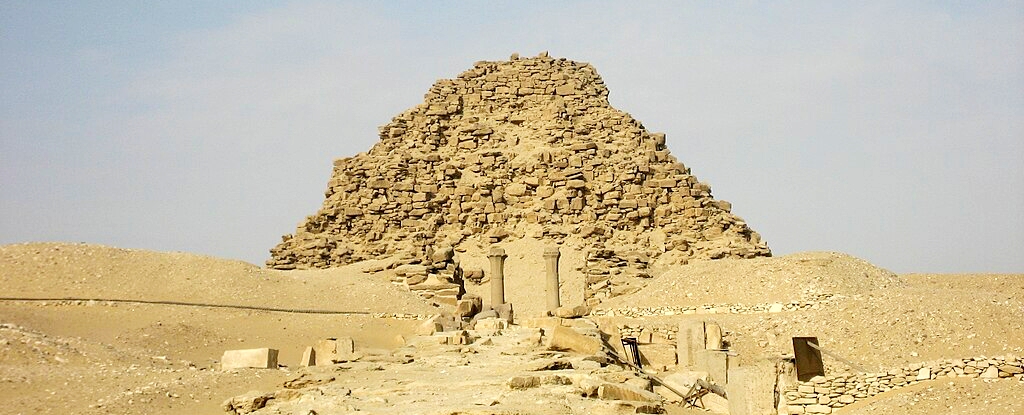In 1836, the Pyramid of Sahure, also known as Sahura, was being excavated by Egyptologist John Shae Perring, who observed a passageway filled with debris.
Due to his expertise in floor plans of such structures, he speculated that there might be storage rooms beyond.
However, it took nearly 200 years to finally validate his assumptions.
The concealed storage rooms
The area was severely damaged, making it impossible to enter, thus leaving Perring uncertain about the accuracy of his hypothesis.
Several decades later, Ludwig Borchardt, a German Egyptologist, disregarded Perring's assertions during his excavation of the site in the early 1900s. Had he paid closer attention, history might have taken a different course.
Presently, a collaborative effort between Egyptian and German researchers involved in the restoration of the pyramid has proven Perring's accuracy.
Using lidar, a technique that employs laser pulses to penetrate obstacles such as tree canopies or walls in order to explore what lies beyond, the researchers have mapped the exterior and interior passages and chambers.
Over the centuries, temperature fluctuations, high humidity, and windy conditions have contributed to the collapse of certain sections of the pyramid.
By clearing some of the rubble and generating 3D maps, the researchers have gained a more comprehensive understanding of the structure, including the discovery of eight previously concealed rooms connected to the passageway identified by Perring.
According to Egyptologist Mohamed Ismail Khaled from Julius-Maximilians-Universität of Würzburg, who led the restoration team, it is likely that these newly found chambers served as storage rooms for burial objects belonging to royal rulers.
Sahure's Pyramid
Situated in the Abusir pyramid complex, just south of Giza, this structure is linked to Pharaoh Sahure, who reigned during the Fifth Dynasty around 2400 BCE. Though one document suggests that Sahure was not of royal lineage, he was believed to be the son of Ra, the Sun deity. As was customary for pharaohs, his pyramid served as a testament to his rule.
The pyramid of Sahura has undergone several excavations over the past two centuries.
Borchardt left a significant portion of the pyramid unexplored. In 1994, a new excavation commenced, revealing large limestone blocks adorned with multicolored depictions. One of these portrays Sahure sailing on a boat, accompanied by a fleet of boats, some of which are embellished with the heads of lions or eagles.
The pyramid is deteriorating
The current state of disrepair of the pyramid can be attributed, in part, to the original construction methods.
The core consists of fragments of limestone, shards of pottery, sand, and other debris. While this expedited the construction process and reduced costs, it may have rendered the pyramid more susceptible to collapse, as indicated by a study conducted in 2022.
The most recent conservation project was initiated in 2019, with the objective of stabilizing the structure by replacing deteriorating supports with retaining walls.
The aim is to clean and secure the chambers, with the potential future prospect of opening the pyramid to the public.
This article was originally published by Business Insider.

0 Comments